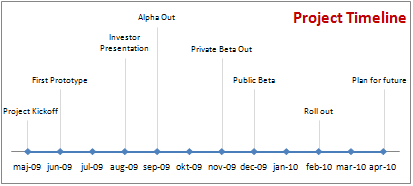
Do you have a complex, large project that simply must not fail? How do you set up the right team to ensure success?
1) Choose your BEST people to participate on the team.
A recent system implementation in my company proved to be one of the more complex projects I have worked on — the key element that saved us when facing huge unforeseen barriers? We had our best people working on solutions and we eventually solved issues that our hired “expert” consultants could not.
2) Choose employees from all levels and functional areas of your business.
Ensure that you have the support of senior managers from these functional areas, and that your team members bring solid expertise from their area of the business to the project. If you bring in the best SMEs (subject matter experts) onto the team, you will get the best design and overall results.
 Make sure you have a variety of personality styles on the team – you will need some task-oriented employees as well as analytical, detailed oriented employees and “persuaders” to sell the end result. A good mix of skills will be needed, particularly for large and complex projects. I have used DISC assessment to work with some teams so they learn to capitalize on individuals’ different styles and unique strengths – this has been invaluable at times to reduce conflict or frustration between individual personalities.
Make sure you have a variety of personality styles on the team – you will need some task-oriented employees as well as analytical, detailed oriented employees and “persuaders” to sell the end result. A good mix of skills will be needed, particularly for large and complex projects. I have used DISC assessment to work with some teams so they learn to capitalize on individuals’ different styles and unique strengths – this has been invaluable at times to reduce conflict or frustration between individual personalities.
3) Set Team “ground rules” for running the project
Spend a bit of time up front teambuilding, letting your group members get to know each other and determine how they want the team to operate. Discuss issues like time commitment, confidentiality, communication processes among team members, procedures for handling conflict.
One of the rules I always establish for handling conflict is a priority grid: “Company first, Department second, Individual third”. This means the group commits to making decisions based on the best overall corporate benefit first, even if a department or individual preference may be overridden. There will be many times you have to refer back to this rule.
4) Develop a Clear Vision of the “end goal”.
The group must actively participate in discussion and development of the final vision of the business. Work on a descriptive narrative that fully describes what you want to achieve upon completion of the project. Active participation is necessary to ensure all stakeholders are “bought in” to the concept and execution of the project. Use visuals like flowcharts to describe your end vision.
5) Communicate the Vision to the rest of your business stakeholders – regularly!
The vision of the end project is the critical element that will focus your organization on end results. It is important to describe this vision well, so you set proper expectations for delivery of your project. Use different types of communication as needed (written, video, verbal, demonstrations, etc.) and as your team works through to the end of the project.
6) Use project tracking systems and establish success “milestones”.
Break your project down into milestones – natural points in the progress of your progress where you will have achieved some success or completed a stage of work. Label these milestones, set target dates to achieve and then celebrate when you meet them. Publishing your milestones and dates throughout the organization will make them more “real” to everyone; however then the pressure is on team members to succeed — so make sure milestones are realistic and achievable.
 For large, complex projects use Project management software and build in a disciplined review of progress.
For large, complex projects use Project management software and build in a disciplined review of progress.